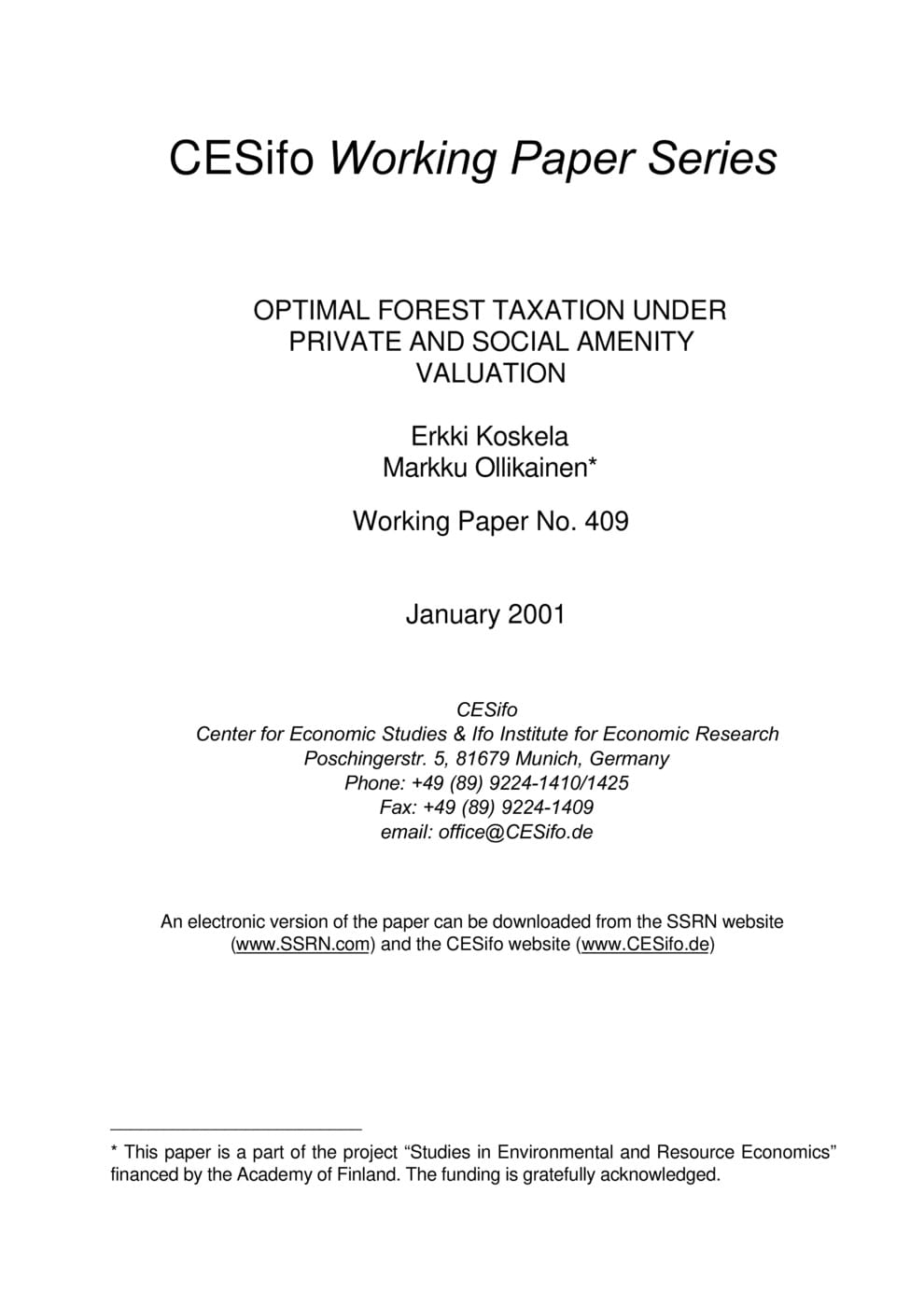Optimal Forest Taxation under Private and Social Amenity Valuation
CESifo, Munich, 2001
CESifo Working Paper No. 409

This paper analyzes socially optimal forest taxation when the government has a binding tax revenue requirement. In the Faustmann model the optimal design of forest taxation consists of non-distortionary taxes, such as site productivity tax, site value tax or profit tax. A combination of distortionary unit (or yield) tax and timber tax can also be used to collect the tax revenue in a non-distortionary way. In the Hartman model with amenity services as a public good, the optimal design consists of a non-distortionary tax and a Pigouvian tax, which adjusts the private rotation age to the socially optimal one. Now only the site productivity tax is non-distortionary, while unit, yield, timber, site value and profit taxes generally serve as a corrective Pigouvian taxes. In the absence of a non-distortionary tax, a combination of unit (or yield) and timber taxes can often be used to both tax revenue collection and Pigouvian correction.